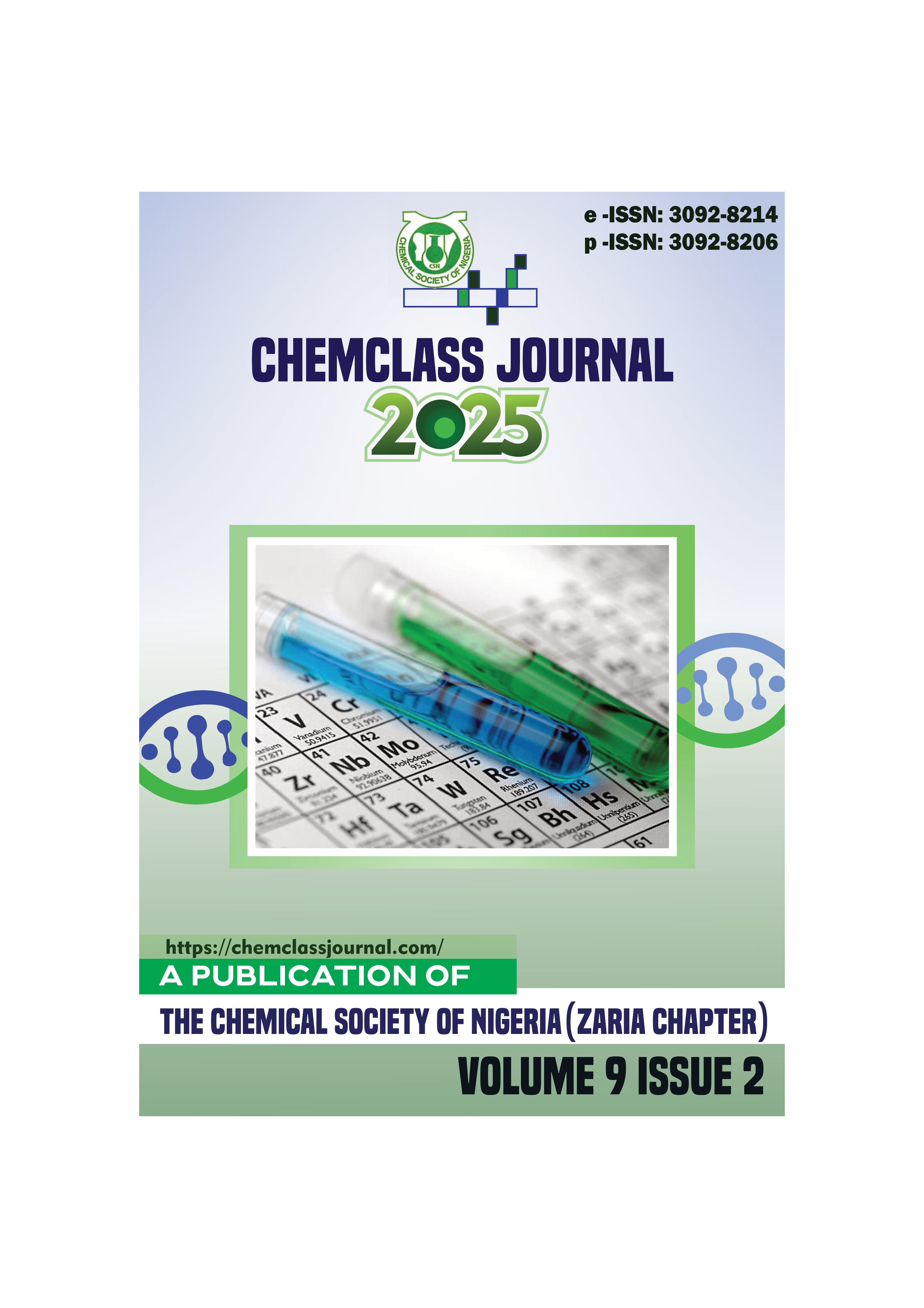Metabolic Profiles and Physiochemical Evaluation of Selected Energy Drinks in Common Use in Abakaliki, Ebonyi State Using Potatoes Membrane as an Absorbent
DOI:
https://doi.org/10.33003/chemclass-2025-0901/144Keywords:
Caffeine content , Energy drink , Evaluation , Metabolic profiles , PhysiochemicalAbstract
Energy drink consumption has shown to be positively associated with high-risk behaviour. In this study,
the physiochemical and metabolic profiling of four energy drinks were evaluated and the parameters
assessed include: pH which showed slightly acidic and ranged from 4.47-5.18; turbidity ranged from 85.35 - 126.22 NTU; total dissolved solids (TDS) ranged from 380.22-956.21 mg/L; total suspended solid (TSS)
concentrations were found to be 320.25 mg/L and conductivity ranged from 1035.01-1240.39 µs/cm. All
of the above values were within the permissible limit of Food and Drug Administration (FDA). However,
iron level of energy drinks ranged from 1.502 x 10-2 mg/L-1.930 x 10-2 mg/L, while the calcium
concentration ranged between 1.24 x 10-1- 1.73 x 10-1 mg/L. Potassium concentrations ranged from 12. 40
x 102-17.00 x 102 mg/L which were a little lower than the recommended daily intake (RDI). Sample A and
D revealed magnesium values of 1.9 x 10-1 mg/L and 1.8 x 10-1 mg/L with control at 8.1 x 10-1, while the
chloride content ranged from 4.91 x10-2 mg/L-5.75 x 10-2 mg/L control at 4.487 x 102. All the samples
analyzed have the obtained values within the permissible limit, set by the regulatory agencies. The spectral
analysis by GS-MS revealed the presence as well as the concentration of the following compounds: 4
methyl-2-propyl-furan (2.547%), 1-(hexyloxy)-3-methyl-Hexane (0.09%), Glutaric acid, 2-ethylhexyl 4
chloro-2-methoxyphenyl ester (0.082%), 2,3-dihydro-3,5-dihydroxy-6-methyl- 4H-Pyran-4-one (4.945%),
Benzoic acid (0.876%), 3,5-dihydroxy-2-methyl- 4H-Pyran-4-one (0.0210%), 5-Acetoxymethyl-2
furaldehyde (0.156%), 5-Hydroxymethylfurfural (71.627%), Octanoic acid (1.152%), 2,6-Heptadienal, 2,4
dimethyl-(0.288%), Oxacyclooctadec-3-en-2-one, 5,6,7-trihydroxy-18-methyl- (2.711%), Caffeine
(3.075%), 5-Methyl-N-(3-nitrophenyl)-2-furamide (0.098%). The percentage ion concentration of caffeine
in all the samples were a little higher than the FDA set standard of 400 mg per day but majority of the
compounds identified were metabolic products of sugar degradation. However, regulatory authorities
saddled with monitoring the quality of food and drugs should periodically ascertain these oversight
functions, for maintenance of food quality.





 ChemClass Journal
ChemClass Journal
